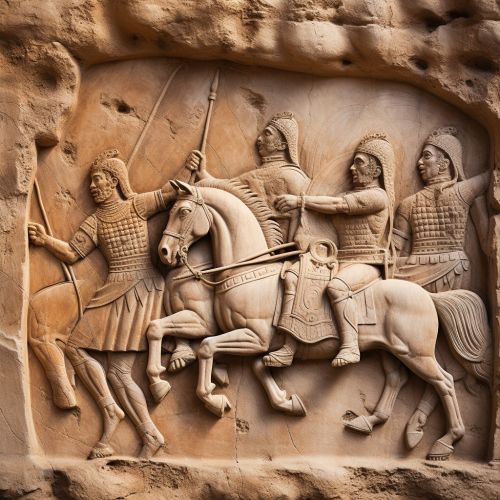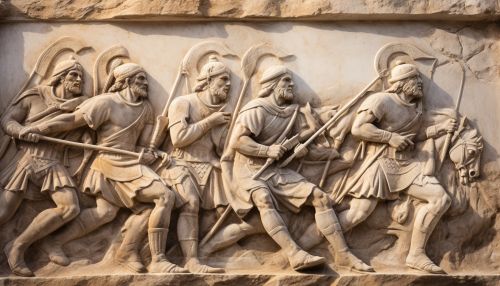Parthian Empire
Origins
The Parthian Empire, also known as the Arsacid Empire, was a major political and cultural power in ancient Iran. Its origins can be traced back to the late 3rd century BC, when the Parni tribe, a branch of the Dahae confederation, migrated from the Central Asian steppes to Parthia, a region in northeastern Iran. The Parni were led by Arsaces I, who is traditionally regarded as the founder of the Parthian Empire.
Rise to Power
The Parthians initially served as vassals to the Seleucid Empire, a Hellenistic state that controlled a vast territory stretching from Anatolia to the Indus Valley. However, the Seleucids were weakened by internal strife and external threats, providing an opportunity for the Parthians to assert their independence. Under the leadership of Arsaces I and his successor, Arsaces II, the Parthians gradually expanded their control over the eastern provinces of the Seleucid Empire.


Government and Administration
The Parthian Empire was characterized by a decentralized system of government, with considerable autonomy granted to local rulers and city-states. The empire was divided into several provinces, each governed by a satrap who was appointed by the king. The satraps were responsible for collecting taxes, maintaining law and order, and providing military support to the central government.
The Parthian king, also known as the "Great King", was the supreme authority in the empire. He was assisted by a council of nobles, which included members of the royal family and high-ranking officials. The king's authority was symbolized by the royal tiara, a distinctive headgear adorned with jewels and a diadem.
Economy
The economy of the Parthian Empire was primarily based on agriculture, with wheat, barley, and dates being the main crops. The fertile lands along the rivers Tigris and Euphrates were particularly suitable for farming. The Parthians also engaged in trade, taking advantage of their strategic location along the Silk Road to facilitate commerce between the East and the West. They exported goods such as textiles, carpets, and precious metals, and imported luxury items like silk, spices, and wine.
Military
The Parthian military was renowned for its cavalry, which was divided into two main types: the heavy-armored cataphracts and the light-armed horse archers. The cataphracts, clad in full chain mail and armed with lances, served as the shock troops of the Parthian army. The horse archers, on the other hand, were known for their mobility and their use of the "Parthian shot", a tactic where the archer would shoot arrows while retreating.
Culture
Parthian culture was a blend of Persian, Hellenistic, and Central Asian influences. The Parthians adopted the Greek language for administrative purposes, while maintaining their native Parthian language for everyday use. They also embraced Hellenistic art and architecture, as evidenced by the remains of their cities and monuments.
The Parthians were followers of Zoroastrianism, the ancient Persian religion. They believed in a dualistic cosmology, with a benevolent god, Ahura Mazda, and an evil spirit, Angra Mainyu, engaged in a cosmic struggle. The Parthians also practiced ancestor worship and venerated fire as a sacred element.
Decline and Fall
The decline of the Parthian Empire began in the late 2nd century AD, due to a combination of internal and external factors. The empire was plagued by dynastic disputes, rebellions, and economic difficulties. At the same time, it faced increasing pressure from the Roman Empire in the west and the Sassanian Empire in the east.
The final blow came in AD 224, when Ardashir I, the founder of the Sassanian Empire, defeated the last Parthian king, Artabanus IV, and seized control of the empire. Despite their downfall, the Parthians left a lasting legacy in the form of their art, architecture, and military tactics, which continued to influence subsequent civilizations.
